Bags under the eyes are a sign that can be a signal for the detection of any disease. However, healthy people are not immune from their occurrence. This cosmetic defect occurs due to the accumulation of adipose tissue, which retains liquid substances. Bags under the eyes are a kind of swelling, which in itself is not dangerous. There are many reasons for its formation.
The main causes of bags under the eyes
If the cause of puffiness under the eyes is accumulated fluid, this indicates a problem with the kidneys. With age-related changes, such a cosmetic defect becomes the result of a decrease in the elasticity of the skin. The appearance of bags under the eyes, associated with the pathological growth of fatty tissue around the eye sockets, is rare. This manifestation is associated with hereditary pathologies. The most common causes of these factors are:
- Poor nutrition. Salty, smoked or overly seasoned foods can cause water to accumulate in the body. The same effect is observed with alcohol. In addition, if a person does not drink enough fluids, the kidneys reduce their activity, thereby creating a supply of water in the body.
- Lack of proper sleep. If a person sleeps less than 8 hours a day, his skin loses elasticity.
- A surge in hormones such as estrogens. They prevent the removal of fluid from the body.
- Lack of vitamin B 5. In this case, symptoms such as insomnia, fatigue, muscle and head pain, and numbness of the feet are observed.
- General diseases of the body. Diseases of the kidneys, liver or cardiovascular system may be detected.
- Banal allergy. If you find and remove the cause leading to the swelling, it will go away on its own.
- Pathological changes in the visual organs. This may be blepharitis, conjunctivitis, ectropion, scleritis or ptosis.
- An inflammatory process located in the sinuses or mouth. In this case, edema manifests itself as a one-sided process.
- Physiology. This may be excess weight or hereditary excess fat in the subcutaneous tissue.
Bags under the eyes also form if human life is poorly organized or when showing excessive interest in cosmetics.
Household reasons
Swelling as an everyday phenomenon is provoked by the following factors:
- Fatigue of the eye muscles from prolonged strain while working on a computer, reading, or concentrating on small details.
- Rest interrupted at night or incorrect sleeping position.
- Crying caused by overstrain of the nervous system.
- Being in a place where there is a lot of smoke.
- Contact with foreign objects or chemicals in the eyes.
If we talk about bags under the eyes during injuries, this is a kind of protective reaction that prevents the visual organs from mechanical influences. However, such a reaction can lead to infection.
Abuse of cosmetics
Women, using cosmetics incorrectly, create additional conditions for the appearance of bags under the eyes:
- Applying decorative cosmetics in a thick layer and incompletely removing it from the face before resting.
- Using inappropriate or low-quality products.
- Abuse of moisturizers.
- Addiction to Botox procedures.
These factors cause excessive saturation of the body with water and impaired lymphatic drainage.
Why do healthy people have bags under their eyes?
Abuse of salt and alcohol is one of the reasons leading to the formation of edema in healthy people. In this case, swelling occurs during the daytime, being practically absent in the evening. The cause of bags under the eyes in the absence of any diseases is also insufficient rest, age-related changes and genetic predisposition. If we talk about excessive sun exposure, then bags under the eyes appear as a defensive reaction. It lies in the fact that due to drying of the skin, additional fluid resources are formed under it. Here's what internet users say about bags under their eyes:
Here we see a description of the main causes of edema and methods of treating them.
Red bags under the eyes as a result of the inflammatory process
If the bags under the eyes have acquired a red tint, this indicates that an inflammatory process is occurring in the body. It is characterized by swelling, pain and redness of the affected area. Very often bags under the eyes are the result acute respiratory infection. Among them, adenovirus is a consequence of conjunctivitis or inflammation of fatty tissue. It is accompanied by the following symptoms:
- The eyes hurt, become irritated, itch, and turn red.
- The nose is stuffy. Discharge appears from it.
- My throat feels sore. I have a cough.
- Body temperature rises.
Treatment is carried out in accordance with the prescription of the therapist.
A bag under one eye is a symptom of unilateral sinusitis. Associated symptoms look like this:
- A person has recently suffered a viral infection.
- There has been discharge from the nose for a long time. It's constantly pawned.
- General fatigue is noted. Body temperature is kept within 37C.
If you have sinusitis, you need to consult an ENT specialist. An acute disease is treated with antibiotics and physiotherapy, a chronic disease is treated with a puncture of the abscess.
If, when bags appear under the eyes, there is pain and itching in the eyes, excessive lacrimation, then the person is sick conjunctivitis. Prescribing treatment then becomes the responsibility of the ophthalmologist.
When bags under the eyes indicate a person’s illness
Bags under the eyes are inseparable from illness in the body under the following circumstances:
- One night became a period of edema formation, the temperature rose, the lower back ached, urine output was impaired - the kidneys suffered from inflammation.
- The period for the appearance of swelling is several days, the temperature has risen, the frontal and eye areas are sore, the nose is not breathing and fluid is leaking from it - the nasal sinuses have undergone an inflammatory process (sinusitis).
- A couple of hours or minutes and bags have formed under the eyes, the eyes have turned red, the person has sneezed, his nose itches and discharge has appeared, he cannot breathe normally - an allergy.
- The appearance of bags became noticeable after the neck increased in size, swallowing and breathing became difficult - the pathology is associated with the thyroid gland.
- The formation of bags under the eyes is accompanied by symptoms such as general weakness of the body, depression, weight gain, or the woman’s menstrual cycle has gone wrong - decreased functionality of the thyroid gland (hypothyroidism).
- Bags under the eyes appear along with severe swelling of the facial area, pain in the head, bleeding from the nose, hoarseness in the voice or cough - a violation of the outflow of blood from the head through the superior vena cava (superior vena cava compression syndrome).
- For several weeks or months, bags under the eyes have formed; they are more pronounced in the evening, accompanied by swelling of the legs, shortness of breath, decreased performance - heart failure.
Only a doctor can name the exact cause of bags under the eyes. Therefore, if you suspect that you have the disease, contact a specialist immediately.
Bags under the eyes in pregnant women
Most often, bags under the eyes in pregnant women manifest themselves as a physiological feature that is the norm in this condition. This occurs due to the accumulation of salts and fluids in their body. A minor cosmetic defect appears along with weight gain and increased skin moisture. If swelling increases in size, this indicates the following abnormalities:
- Failure of the kidneys due to pyelonephritis or other diseases.
- Heart failure due to excessive stress during childbearing.
- Preeclampsia, which manifests itself in the second half of pregnancy. Such a complication can greatly affect health or cause the loss of a child.
To distinguish harmless bags under the eyes from those that indicate the presence of a disease during pregnancy, you need to pay attention to the following factors:
- Weight gain. You should be wary if you quickly gained more than 10 kilograms.
- The food you ate. If it is saturated with salts, then swelling will be normal; if you followed a diet, then suspicion should fall on the presence of a disease.
- What happens to swelling? If there is no positive dynamics or increased swelling after giving up salty foods, this indicates pathology.
- The presence of chronic diseases of internal organs. If such diseases exist, then bags under the eyes may indicate their exacerbation.
In some cases, a pregnant woman may feel normal even if she has some disease. Therefore, if the bags under the eyes become pronounced, in any case you need to contact an antenatal clinic.
How to get rid of bags under the eyes
If the bags under the eyes are not the result of a malfunction in the body or illness, the following tips will help get rid of them:
- Limit your intake of salts and seasonings. Eat only healthy foods.
- Drink at least 1.5 liters of water per day. The main part of it should occur during the daytime.
- Do not abuse alcoholic beverages.
- After a night's sleep, cool the area around your eyes with an ice cube. Thanks to this, the blood vessels will narrow and the swelling will disappear.
If bags under the eyes are the result of a disease, you must undergo a course of treatment in accordance with medical prescriptions.
Some will say that bags under the eyes are just a cosmetic problem. Someone will think: well, I didn’t get enough sleep today, tomorrow I won’t even remember about it. But if, looking in the mirror every morning, you see swelling on your face, this is a reason to think, is it just a lack of sleep?
To make it clearer, let's say a few words about the anatomy of the orbit. The eyeball is a rather fragile organ and needs protection. Therefore, in the orbit it is surrounded on all sides by fatty tissue, which protects and cushions it. Separating this impressive amount of fat, called periorbital fat, from the delicate skin of the eyelids is a thin layer of connective tissue (membrane). It does not allow the periorbital tissue to extend beyond the orbit.
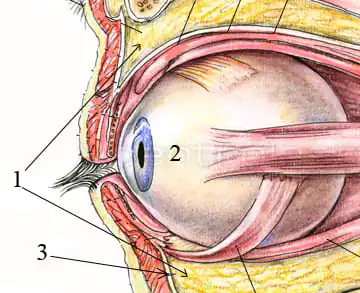
Anatomy of the orbit. In the figure 1 - periocular tissue, 2 - eyeball, 3 - membrane
Causes of bags under the eyes
The reasons for the appearance of “bags” under the eyes are a decrease in elasticity and overstretching of the membrane with its bulging and the formation of a hernial protrusion, which we see as “bags”. About three years ago, another reason was proven - the growth of the fiber itself, its increase in volume and protrusion beyond the orbit. Even a slight swelling of the fiber would not be so noticeable if not for its ability to accumulate fluid.
Edema significantly increases the volume of fatty tissue in the orbit and is caused by many reasons. Let's list a few: abuse of salt and alcohol, which lead to fluid retention in the body, excessive ultraviolet radiation (the skin, in defense, stores moisture), eye fatigue.
If the cause of bags under the eyes is fluid retention, they usually disappear in the afternoon. This is due to the activation of blood circulation during wakefulness and facilitating the removal of excess fluid from the upper half of the body.
If the “bags” under the eyes do not change during the day, then the growth of fiber is to blame. Most often, there is a genetic predisposition to this defect; the skin over it darkens, which visually only aggravates the problem.
With age, there is also a decrease in tissue elasticity and a gradual increase in the amount of fiber, specifically in the lower half of the orbit. Therefore, with age, the appearance of “bags” under the eyes becomes more common and requires fewer provoking factors. In addition, the older the patient, the greater the likelihood of developing diseases that contribute to fluid retention.
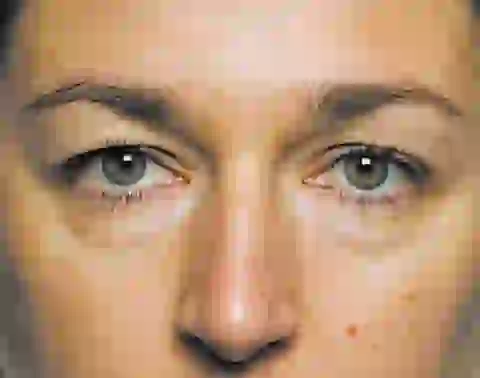
In the photo there are bags under the eyes
Diseases that cause bags under the eyes
The first thing a doctor thinks about when a patient comes to him with “bags” under the eyes is kidney diseases. In this case, swelling on the face appears quickly (within several hours), combined with general weakness, fever, pain in the lumbar region, changes in color, transparency and amount of urine. All of the above is typical for inflammatory kidney diseases, which are often complications of colds, sore throat, cystitis (inflammation of the bladder).
An additional factor for the appearance of edema in this case is the loss of albumin protein in the urine. Albumin is found in blood plasma and helps retain water in it. Healthy kidneys prevent it from getting into the urine. But with the disease, kidney function is impaired and in the laboratory it is possible to detect the release of one or another amount of protein in a general urine test. You can also recommend a general blood test, which will show signs of inflammation and an ultrasound of the kidneys. Monitoring your blood pressure won't hurt either.
Inflammatory diseases of the paranasal sinuses can also cause swelling of the tissue surrounding the eye. The respiratory sinuses are saccular extensions in the bone tissue associated with the nasal cavity and perform the function of humidifying and warming the inhaled air. If there is pain in the projection of the paranasal sinuses (on one or both sides), a runny nose (sometimes worse on the affected side), fever, headaches, then this speaks for this diagnosis. Inflammation can be either viral or bacterial in nature. The diagnosis is made based on a survey and examination of the patient, supported by X-ray data and a general blood test (to identify signs of inflammation). Inflammation of the maxillary (maxillary) sinus is called sinusitis. It is paired and is located to the right and left of the nose under the eye sockets. Frontitis is an inflammation of the frontal sinus, which is located to the right and left of the bridge of the nose just above the eyebrows.
For allergic diseases swelling under the eyes is also characteristic. Allergic inflammation of the mucous membrane of the eyes (conjunctivitis) can develop with increased sensitivity to certain substances (allergens) and is manifested by redness and swelling of the eyes, itching in the eyes. There is a seasonality of these symptoms associated with the flowering of trees and grasses. In this case, it is necessary to stop contact with the suspected (or known) allergen as quickly as possible and consult a doctor for treatment.
Conjunctivitis may not only be of an allergic nature, but also infectious and chemical. Bacteria enter the sensitive mucous membrane of the eyes when hygiene rules are violated with dirty hands, cosmetics and makeup devices. Dust and air pollution, low-quality cosmetics have an irritating effect. An ophthalmologist will look into the causes of conjunctivitis and prescribe treatment in accordance with the identified cause of the disease.
A separate line in the group of swelling around the eyes of an allergic nature is acute allergic edema (Quincke's edema). This is a rapidly developing allergic reaction that can be life-threatening. If you notice that after contact with any substance, swelling suddenly appears very quickly on the face and neck, a dry hacking cough, shortness of breath and difficulty breathing, then you must urgently call an ambulance. Quincke's edema affects not only the subcutaneous tissue, but also the mucous and muscular membranes. During an allergic reaction, substances are released that sharply increase the permeability of blood vessels to fluid and protein. When the walls of the larynx swell, it becomes difficult for air to enter the lungs and the person may suffocate. In the summer, Quincke's edema often develops after an insect bite (wasp, bee, fly), especially if the bite occurred in a place rich in blood vessels and close to the head.
Some acute respiratory viral infections (ARVI) also occur with symptoms of conjunctivitis and edema of the periorbital tissue. They combine symptoms of eye irritation, runny nose (rhinitis), fever and sore throat. This is typical for adenovirus infection.
A few words worth saying about hypothyroidism. The lack of production of thyroid hormones is manifested by nonspecific symptoms, including swelling of the face, arms, legs, internal organs, a decrease in general metabolism (obesity, constipation, slow pulse and speech, decreased memory and attention, dry skin, hair loss and nails). In an advanced form, myxedema develops - swelling of the skin and subcutaneous tissue throughout its entire length, elastic, not leaving a pit. The diagnosis is confirmed by laboratory testing, which reveals a decrease in the level of thyroid hormones in the blood and, with the help of an endocrinologist, adequate doses of replacement therapy are prescribed.
If “bags” under the eyes are combined with pain in the left half of the chest, palpitations, shortness of breath during exercise, swelling of the legs, then most likely their cause is heart disease. Chronic heart failure occurs when the heart cannot cope with pumping blood throughout the body, and organs (including the heart itself) suffer from a lack of oxygen and nutrients. Edema in heart failure first appears in the legs and gradually “rises” higher if appropriate treatment is not carried out. Swelling on the face and around the eyes can be a serious sign of anasarca - swelling of the entire subcutaneous tissue and internal organs, which threatens the patient’s life. To confirm heart disease, an ECG and ultrasound of the heart (ECHO-CG), monitoring of blood pressure and blood lipid levels are prescribed.
Bags under the eyes occur equally often in both women and men, only men are much less likely to pay attention to this symptom and, as a result, later seek medical advice. Bags under the eyes are also common in children.
Bags under the eyes of a child
The appearance of bags under a child's eyes does not always indicate health problems. Bags under the eyes in healthy children appear in the following cases: after a child has been crying or screaming for a long time, after drinking too much liquid or salty foods, after sleeping in a position where the child’s head is located below the body.
If the bags under the eyes of a child are not associated with diseases, they will go away on their own after the causes are eliminated. The appearance of bags under the eyes in a child can be caused by the same diseases as in adults, and in this case, consultation with a doctor is required. You need to consult a pediatrician if:
- Bags under the child's eyes appeared suddenly, accompanied by lacrimation, redness of the eyes, clear nasal discharge, and anxiety. In this case, it is likely that you have an allergy (Quincke's edema), which requires immediate medical attention.
- Bags under the eyes are combined with fever, headache, lower back pain, urinary disturbances (frequent or rare urination, blood in the urine). These symptoms indicate kidney disease.
- Bags under the eyes are accompanied by bulging fontanelles, anxiety, and crying of the child. The likely cause of swelling under the eyes of a child in this case is increased intracranial pressure.
- Bags under the eyes do not go away for a long time, increase over time, and are observed throughout the day.
Bags under the eyes during pregnancy
The appearance of bags under the eyes during pregnancy is often normal and is caused by salt and water retention in the pregnant woman's body. Excess fluid accumulates in adipose tissue and subcutaneous fat, causing the appearance of bags under the eyes, weight gain, and increased skin moisture.
But the appearance of swelling under the eyes of a pregnant woman may also indicate kidney disease, gestosis (dropsy) in pregnant women, or other diseases that threaten the life of not only the expectant mother, but also the fetus, so timely consultation with an obstetrician-gynecologist is necessary and a general urine test is required to exclude pathology.
Treatment for bags under the eyes
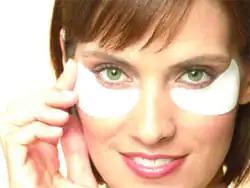
Treatment of “bags” under the eyes at home is only possible if the cause is swelling of the tissue, and not its pathological growth, and if this swelling does not appear as a result of any disease. In this case, folk remedies recommend restoring the work and rest regime, giving up bad habits, and following a diet with the correct content of salt, microelements, vitamins and fiber.
Among cosmetic folk remedies, cold and hot compresses with herbal infusions (sage, chamomile, tea, dill, fennel) will help remove bags under the eyes. It is possible to use self-massage and daily exercises to strengthen the eye muscles. After consulting a cosmetologist, professional hardware may be recommended to you. The most radical way to combat bags under the eyes is surgical treatment - blepharoplasty.
I would like to warn against the unreasonable use of medications not intended for the treatment of edema. In my practice, there was a case when, for swelling on the face (on the advice of friends), the patient used ointment to treat hemorrhoids. Needless to say, this led to disastrous results in the form of severe irritation and long-term treatment by a dermatologist. The skin of the eyelids is very delicate and requires special care.
You should not use diuretics without a doctor's recommendation. This can lead to an imbalance of microelements in the body, in particular potassium and sodium, which can lead to serious disturbances in the functioning of the heart.
“Bags” under the eyes by themselves do not bring pain or inconvenience to their wearer and only spoil the appearance. But if they are caused by serious illnesses, then delaying the time to see a doctor can negatively affect their prognosis. Incorrect treatment of kidney and heart diseases often leads to irreversible changes in these organs that threaten life. Allergic diseases can signal the onset of bronchial asthma.
Which doctor should I consult for bags under my eyes?
Only a doctor can understand all the nuances. In such cases, in addition to a cosmetologist, to exclude diseases as the cause of swelling of the periorbital tissue, it is necessary to visit a general practitioner. Consultations with narrow specialists are advisable only after additional examination, if necessary.

Bags under the eyes are not only a conspicuous cosmetic flaw, but are probably a signal of existing health problems. If the puffiness under the eyes is not caused by having too much fun the night before, lack of sleep or an allergic reaction, you should promptly consult a doctor. We will tell you in this article which doctor to go to if bags form under your eyes.

Which doctor should I contact if I have bags under my eyes?
The choice of a specialist directly depends on the cause of the deficiency. Often the patient does not know what causes the appearance of bags under the eyes. In this case, which doctor diagnoses the appearance of bags under the eyes? The first step is to make an appointment with your GP. He will conduct a first examination, get acquainted with the medical history, express his assumptions, give directions for tests and other diagnostic procedures, and then send you to a highly specialized specialist.
If the patient suspects the reason for the deficiency, it is wise to first consult with a therapist. And in some cases, it is possible to get to a specialist after a visit to a therapist.
If bags have formed under the eyes, which doctor is most likely to help? Often the presence of unpleasant puffiness under the eyes indicates problems in the functioning of the organs that perform the excretory function. These are kidneys, liver, pancreas, etc. In this case, you need to go to a nephrologist or urologist.
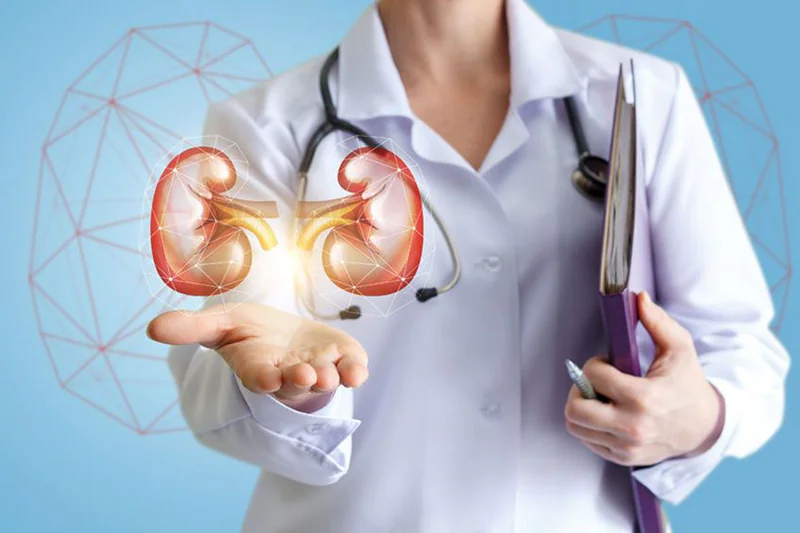
They will send you for a blood test, urine test, ultrasound of the kidneys and bladder, urography, and give you a referral for a number of specialized diagnostic procedures.
If the problem is hormonal - thyroid dysfunction, premenstrual syndrome, menopause, you need to go to an appointment with an endocrinologist. You should see this doctor if bags under your eyes occur due to weight gain.
If the problem is caused by disturbances in the functioning of the cardiovascular or lymphatic system, you need to go to a therapist or cardiologist. This is the right decision if swelling is accompanied by dizziness, pain in the chest area, and weakness.
Swelling under the eyes can be the result of an allergic reaction, both seasonal and household, as well as food. Sometimes the most seemingly harmless allergen can lead to severe allergies. Feathers used to stuff pillows, plant pollen, pet fur and saliva, household chemicals - all this and much more can cause severe allergies and bags under the eyes. Which doctor should I contact in this case? An allergist will help after a series of diagnostic procedures, including a general chemical blood test and allergy skin tests.
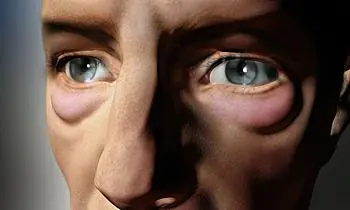
An otolaryngologist will help if the appearance of bags under the eyes is due to dysfunction of the ENT organs. With inflammatory processes in the ear, nose and throat, swelling under the eyes often occurs. And they can even appear as a result of a draft from open windows or the air conditioner operating at full power. The doctor will probably order an ultrasound of the maxillary sinuses. It especially makes sense to go to an ENT specialist if one half of the face suffers from swelling.
If bags under the eyes appear as a result of a head injury, it is important to quickly contact a traumatologist or surgeon. The doctor will take an X-ray of the skull and determine if there are any fractures or cracks in the bones.
It is important not to wonder for a long time about bags under the eyes - which doctor to see and not to self-medicate, but to visit a doctor as soon as possible. The earlier the cause of the disease is found, the faster and more effective the treatment will be.



